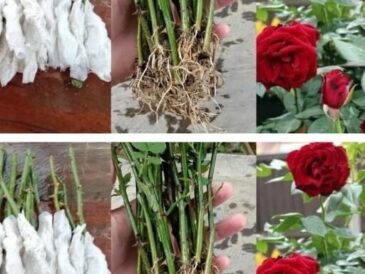If you’re looking to bring some beauty—and a bit of mystique—into your home, the Maranta leuconeura, also known as the praying plant, is a stunning choice. More than just a decorative houseplant, Maranta is said to attract luck and positive energy while offering a calming, meditative presence.
One of its most captivating features? At night or in low light, the leaves fold upward as if in prayer. It’s a quiet, natural movement that gives the plant its name—and its charm.
Why the Praying Plant Belongs in Your Home
Known affectionately as the priest’s plant, Maranta stands out with its bold leaf patterns and vibrant colors. Each leaf is like a piece of art, featuring a mix of stripes, spots, and deep green tones. Whether you’re a plant enthusiast or a beginner, this plant adds instant character and serenity to your space.
Here’s why you might want to make room for one:
- Visually striking: The foliage makes it a conversation piece in any room.
- Symbolic value: Traditionally associated with luck, peace, and prosperity.
- Interactive: Its daily movement makes it feel almost alive and responsive to its environment.
How to Care for a Praying Plant: A Simple Guide
Maranta is relatively low-maintenance, but there are a few things you’ll want to keep in mind to help it thrive.
Light: Keep It Indirect
Place your praying plant in a bright room, but keep it out of direct sunlight. Too much sun can scorch the leaves or fade their beautiful patterns. Instead, go for indirect or filtered light—near a north or east-facing window is ideal.
Temperature: Stay in the Comfort Zone
Maranta prefers a warm, stable climate. Keep your room between 18°C and 24°C (64°F to 75°F), and avoid cold drafts or sudden changes in temperature. The plant is sensitive to chill, so don’t place it too close to windows in winter or near AC vents.
Humidity: Moist and Cozy
Humidity is where Maranta really shines. It naturally grows in tropical regions, so it loves a humid environment.
To maintain proper humidity:
- Place a tray of water and pebbles beneath the pot
- Mist the leaves a few times a week using filtered or distilled water
- Use a humidifier if your indoor air is especially dry
Watering: Balance Is Key
When it comes to watering, consistency matters. Keep the soil evenly moist, but not soggy.
Here’s how to do it right:
- Water when the top inch of soil feels slightly dry
- Use room temperature, filtered water if possible
- In winter, reduce watering slightly, but don’t let the soil dry out completely
Avoid letting water sit in the pot’s saucer, as this can lead to root rot.
Bonus: What Makes Maranta So Special?
Aside from its good looks and easy care, the Maranta plant offers something extra. Its gentle nightly movement—leaves rising as light fades—adds a quiet, almost spiritual rhythm to your space. It’s a daily reminder to pause, breathe, and reflect.
Plus, it’s pet-friendly, making it a safe addition to homes with cats or dogs.
The Final Word: More Than Just a Houseplant
The Maranta praying plant is more than just décor. It’s a living symbol of calm, balance, and quiet transformation. With just a little attention to light, moisture, and warmth, it will thrive and bring beauty and a peaceful energy to your home.
Thinking of Getting One?
Now’s the perfect time. Add a Maranta to your indoor plant collection and enjoy the visual beauty and soothing presence it brings. Whether for its symbolic value or simple aesthetic appeal, it’s a meaningful addition to any room.
Ready to invite a little more luck and tranquility into your space? Try adding a Maranta to your home today and see what a difference it makes.
Let me know if you’d like a printable care guide or suggestions for pairing the praying plant with other houseplants.





